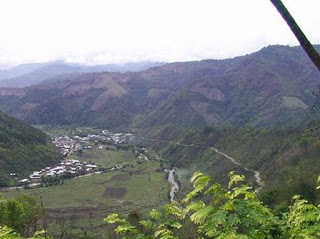
Vanadium Deposits In Arunachal Pradesh: New Metal, Same Old Story
In India, the extraction of resources is based on an antagonistic model where state and private players are pitted against extremely vulnerable communities with ancestral rights to the land.
Siddhartha Sarma
The Geological Survey of India has discovered what are called primary deposits of the metal vanadium in Papum Pare and its neighbouring Lower Subansiri district in Arunachal Pradesh. It is an unusual discovery even by the standards of the Northeast and its resource-rich states.
Vanadium is rare in its ore form, being found mostly as a compound with other minerals and ores, such as bauxite and crude oil. Most of the world’s vanadium ore is in Russia, China and South Africa. The Arunachal finds are the first vanadium deposits to have been found in India.
Its properties make it crucial for diverse industries. Vanadium in steel adds strength to the alloy, while its high conductive properties make it an important part of the future of the superconductor industry. Not to put too fine a point on it, at every stage of the evolution of industrial society, vanadium has had its uses, from trace usage in medieval swords to the spokes of the Ford Model T to the computers of the future.
Arunachal puts India on vanadium map. https://t.co/UKA7nAdHQ6
— Pema Khandu པདྨ་མཁའ་འགྲོ་། (@PemaKhanduBJP) January 11, 2021
But for the people of Papum Pare and Lower Subansiri, or any other part of India’s Northeast blessed with such resources, the recent announcement of this discovery is also time to look at what they have gained from such finds.
The blowout at well no. 5 at Oil India Ltd’s Baghjan oil field in Assam’s Tinsukia district lasted from May 27 to November 15, devastating the surrounding air, water and earth, affecting the local people and wildlife. The second-largest hydrocarbon company in India, which has been extracting oil from Assam for more than 130 years, did not have either the resources, technical expertise or sense of urgency to cap the blowout while it raged for six months.
The resources discovered in the Northeast are frequently just that: numbers on paper to be extracted and processed from nameless, far-off valleys and forested areas for the greater good, we are told, of the rest of the country. Inconsequential quarries from which the construction material for the superstructure of the nation are mined.
The larger questions of the fate of local people and communities most immediately affected in the process of this resource exploitation are not of concern to anyone, least of all to policy makers. And the private sector has a much more deplorable record of dealing with local communities and ecologies when the rewards are so immediate, financially attractive and long-lasting.
Already there is mention of the usual suspects regarding the vanadium deposits and what to do with them. Reliance Petrochemicals is among the few Indian companies which has been extracting vanadium from gasifier slag, and has reportedly created a new process for this extraction.
At Odisha’s Lanjigarh Alumina Refinery, an extraction process refines vanadium from bauxite deposits. Lanjigarh is owned by Vedanta, whose problematic track record among vulnerable and indigenous communities in three continents is well known.
Concerns for local communities wherever vanadium deposits have been found is legitimate. The countries where it is mined in ore form do not have transparent policies or mechanisms to understand how local communities are affected.
Refining processes are still being worked out or are notoriously archaic. Groundwater and soil contamination are known to happen whenever vanadium is released by oil and alumina refineries during extraction processes. Birth defects and lung cancer are caused among animals—as found in lab tests—exposed to large amounts of vanadium.
All of these can be mitigated, or avoided, by political will, which it is fruitless to expect today. Resource extraction companies, public or private, could be made to understand that the best interests of local communities and ecologies is also the best interest of these companies. However, that is frequently not the case.
These questions are certainly not asked in the immediate jubilant aftermath of discovery of a new mineral resource. It is doubtful that the residents of Papum Pare are rejoicing that from underneath their feet will come the superconductors of the future. It is equally doubtful that the people of Lower Subansiri, whose concerns about the Subansiri Lower Hydro-electric Project in Assam’s Gerukamukh have been systematically ignored by policy makers, can expect any fair dealing about the fallout of vanadium extraction.
Across India’s resource-rich pockets, the extraction of resources is based on an adversarial, even antagonistic model where state and private players are pitted against extremely vulnerable communities with ancestral rights to the land. Consider the vanadium finds, again: we do not hear much about which indigenous group will be most directly affected by the discovery. Because they are an afterthought and will continue to be so.
Even when major disaster strikes, such as at Baghjan, local communities are left to raise this irony to those who would listen: resources belong to the nation, we are told, but any ecological or health fallout is to be borne only by local communities.
As long as this unequal, exploitative model lasts, communities will be excused for not immediately celebrating the discovery of this wonder metal, or the political-administrative-corporate circus that will shortly arrive in the two districts… again.
(Siddhartha Sarma is an award-wining novelist and journalist. His latest work of fiction, Twilight in a Knotted World was published by Simon & Schuster last year.)
